Balder BD-4


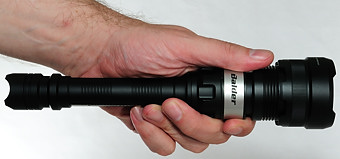
Balder is a new name in flashlights, their first series of lights contains 3 lights BD-1, BD-2 and BD-4, in this review I am looking at and testing the BD-4. The light has 3 brightness settings that is controlled with a tail switch, the light has a hidden mode that also contains sos and strobe.
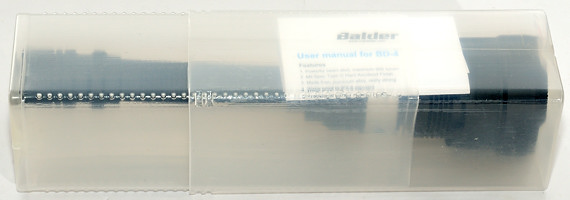
The light arrived in a plastic tube without any markings on it.
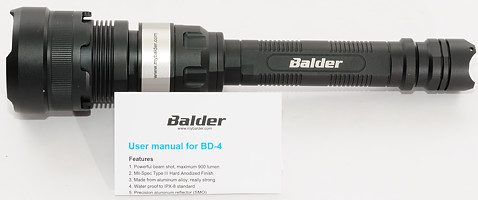
The tube only contained the light and a instruction sheet, no extra o-rings, lanyard.
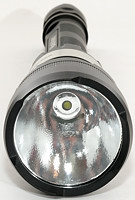


The light has a LOP (Light Orange peel) reflector with a XM-L led at the bottom.
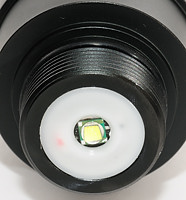
A closer look at the led.
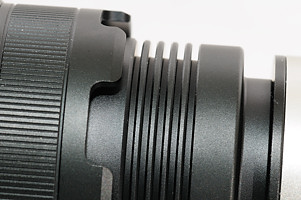
The head has a very unusual design, it includes the typical cooling fins. The crenellation on the back of the head is a bit sharp, I would have like more round corners.
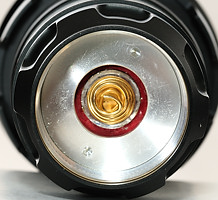
The battery connection in the head is a spring and it is mounted recessed. This means that if a shock is to large for the spring the metal around the spring will stop the batteries, not the circuit board where the spring is mounted.
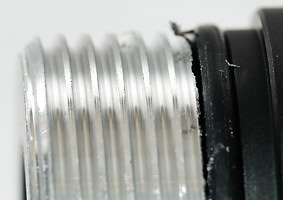
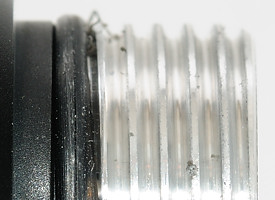
Both front and back threads are not anodized, this means no lockout function. The threads are good quality with little play. There is also a o-rings to keep the light sealed.
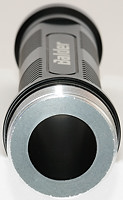
The front end of the battery tube is very thick, the rest of the battery tube is not as thick, but still very solid.
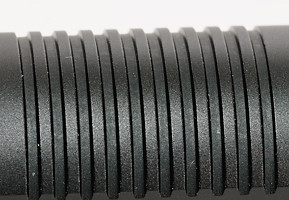
There is no knurling on the light, instead it has some groves on the body.
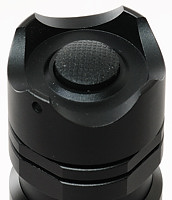
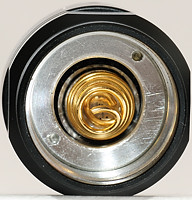
The tailcap has a recessed switch, i.e. it can tail stand, but due to the size of the light it is not very stable. The switch is a reverse switch with very short movement and a distinct click. The four points on the tailcap are a bit sharp and one of them has a hole for a lanyard. The tailcap has the usual spring for the minus connection.

The light has two different user interfaces. To change between them select low mode and wait until the light flashes once, then half press the switch and user interface is changed.
To move between the different modes, just half press the switch when the light is on. The light will remember the last selected mode.

Here is all the part the light can be disassembled in without tools.
This light feels like a solid construction, but I do not like the sharp corners on the light. The light has a very good stabilization and the step down and battery warning is a nice features.
All in all I believe this to be a good light and a decent thrower.
Technical specification and measurements

The light can only be used with 18650 batteries, there is no support for 4xCR123.
Measured size and weight:
Length: 261 mm
Diameter: 26 mm to 60 mm
Weight: 499 with AW18650-26
The light uses a Cree XM-L U2 led.

In the above table I have collected all modes, measured at 7.4 volt. All the estimated runtimes are with 2600mAh LiIon batteries. The estimated lumen is scale from the specified maximum. The brightness is a relative measurement from a lux meter.
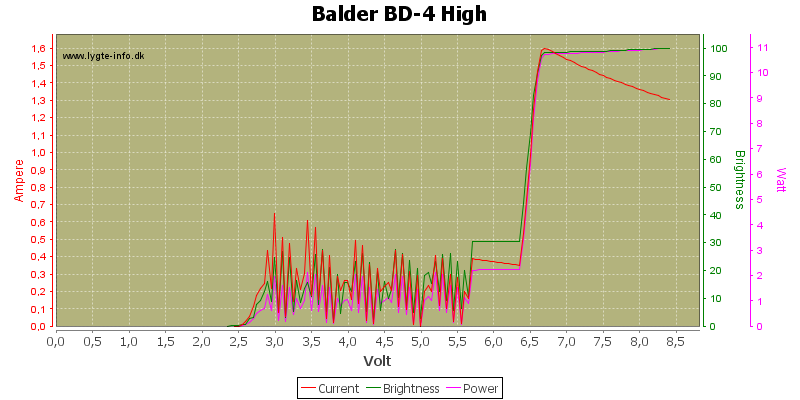
A voltage sweep at high shows a good stabilization that works down to 6.6 volt where the light changes to medium mode. At about 5.7 volt (2.85 per battery) the light will start its warning about low battery. It will not turn off, but continue warning until the batteries protection kicks in. In my sweep there was no protected battery and I could see that the warning worked down to 2.7 volt.
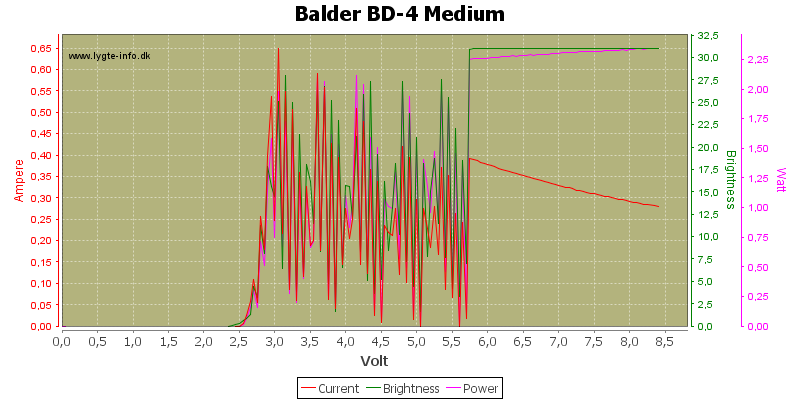
Medium has a good stabilization, when the battery is empty the light does not reduce brightness, but goes directly to warning.
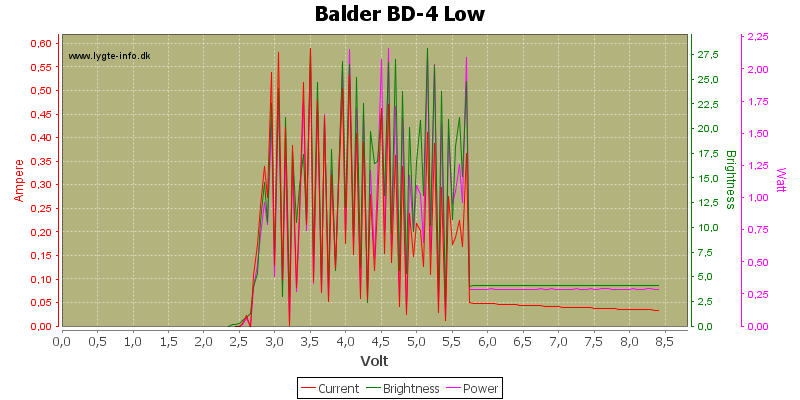
Low also has a good stabilization, when the battery is empty the light starts the warning, but the warning is brighter than low.
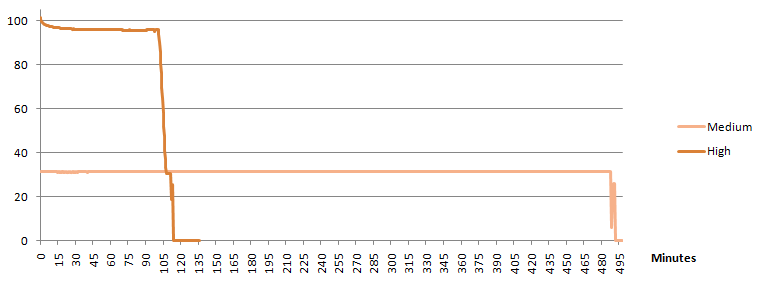
As seen in the voltage sweeps the light has a good stabilization. The step down in high when the batteries are empty can be seen, but it can only hold that for a short time, then it shows the battery warning and goes out. I would have preferred that it stepped down a bit sooner on high, giving a longer runtime before losing all light.
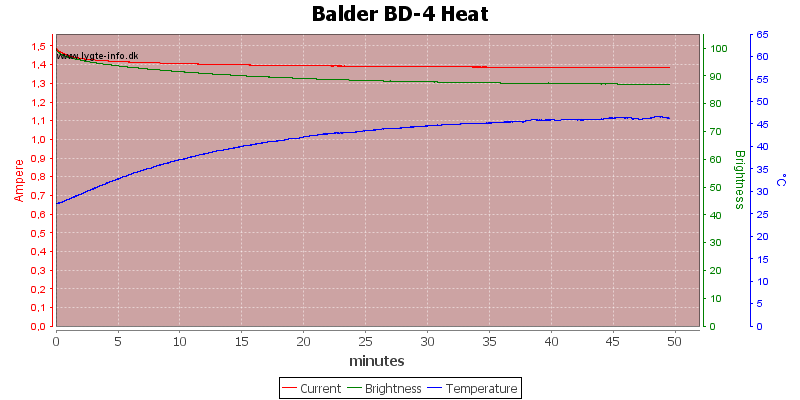
I did a temperature test to see how well the light handles the heat from the led. This looks fine, the light will not have any heat problems in normal use.
Note: My test does not simulate actual usage conditions, but are done on a test bench with only the head of the light and no cooling airflow, i.e. the light will get hotter than during normal use.

The sos uses a 0.13 second dot time and takes a total of 4.9 seconds to transmit. This is one of the faster sos sequences.

Strobe is 15 hz with 45% duty cycle.

The light output on medium has some noise in it, but at a very fast frequency.

Low does also have noise in it, but at a lower frequency (The frequency is still too high to be visible).
Comparison to other Flashlights
ThruNite Scorpion, ThruNite Catapult V2 XM-L, JetBeam BC40:
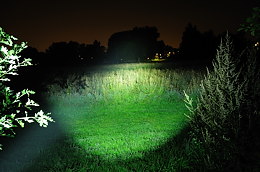
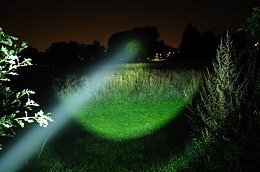
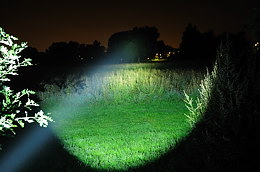
JetBeam PA40, Balder BD-4, Eagletac M3C4 XM-L:
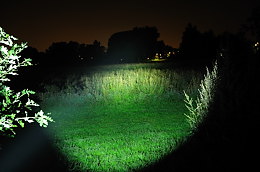
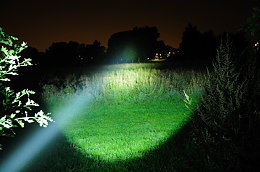
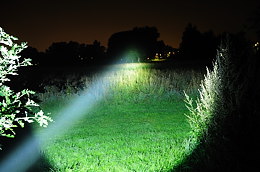
For the full comparison to other lights with graphs and beamshots see here
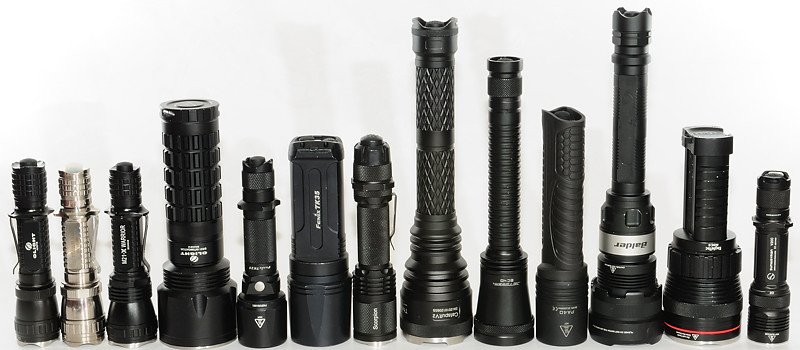
Notes
The light was supplied by Balder for review.




































